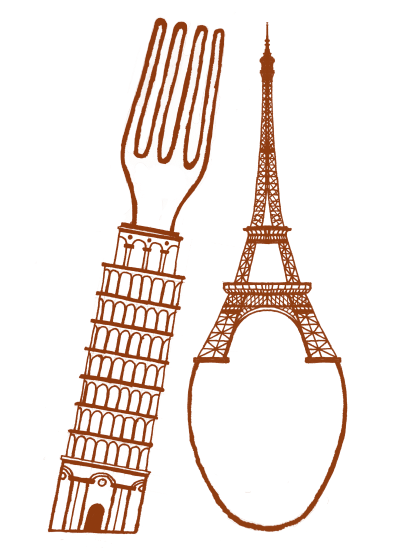Il presente indicativo irregolare - A second lesson on the present tense in Italian. In this lesson, you will find a revision of the regular verbs and the rules of the irregular verbs. Hello everyone. Welcome back to another lesson on The Languages Kitchen! Today, we have another important topic which we've already started talking about a couple of weeks ago.
This lesson will be the continuation and a build-up of that lesson. We're talking about il presente indicativo irregolare. So, before immersing yourself in this lesson, make sure you first follow the first lesson on this topic - il presente indicativo regolare here.
1. Prima tappa
The first two verbs we've learnt on this journey, Essere and Avere are two irregular verbs. These verbs are used on a daily basis so it's imperative that you learn these two verbs before anything else. You can also go back and have a look at the lesson we dedicated to these two verbs here.
Essere
Io sono
Tu sei
Lui/lei/Lei è
Noi siamo
Voi siete
Loro sono
Avere
Io ho
Tu hai
Lui/lei/Lei ha
Noi abbiamo
Voi avete
Loro hanno
2. Seconda tappa
There are a number of irregular verbs in the present tense in Italian. The verbs you will find in this lesson are some of the most popular ones.
The verbi servili/modali- Volere (to want), Dovere (to have to), Potere (to can) and the verb Sapere (to know) are the first few.
Volere
Io voglio
Tu vuoi
Lui/lei/Lei vuole
Noi vogliamo
Voi volete
Loro vogliono
Dovere
Io devo
Tu devi
Lui/lei/Lei deve
Noi dobbiamo
Voi dovete
Loro devono
Potere
Io posso
Tu puoi
Lui/lei/Lei può
Noi possiamo
Voi potete
Loro possono
Sapere
Io so
Tu sai
Lui/lei/Lei sa
Noi sappiamo
Voi sapete
Loro sanno
3. Terza tappa
The other examples of irregular verbs that somehow follow a similar rule between them are Rimanere (to stay), Salire (to go up), Tenere (to hold) and Venire (to come). In the first person singular (Io) and third person plural (Loro), there is the addition of a G.
Rimanere
Io rimango
Tu rimani
Lui/lei/Lei rimane
Noi rimaniamo
Voi rimanete
Loro rimangono
Salire
Io salgo
Tu sali
Lui/lei/Lei sale
Noi saliamo
Voi salite
Loro salgono
Tenere
Io tengo
Tu tieni
Lui/lei/Lei tiene
Noi teniamo
Voi tenete
Loro tengono
Venire
Io vengo
Tu vieni
Lui/lei/Lei viene
Noi veniamo
Voi venite
Loro vengono
4. Quarta tappa
However, in other cases like these ones below, the verb change completely. Some examples are Andare (to go), Stare (to stay), Dare (to give) and Uscire (to go out).
Andare
Io vado
Tu vai
Lui/lei/Lei va
Noi veniamo
Voi venite
Loro vengono
Stare
Io sto
Tu stai
Lui/lei/Lei sta
Noi stiamo
Voi state
Loro stanno
Dare
Io do
Tu dai
Lui/lei/Lei dà
Noi diamo
Voi date
Loro danno
Uscire
Io esco
Tu esci
Lui/lei/Lei esce
Noi usciamo
Voi uscite
Loro escono
5. Quinta tappa
Some more examples of commonly used verbs in Italian are Fare (to do), Bere (to drink) and Morire (to die). Again, you can notice a few changes.
Fare
Io faccio
Tu fai
Lui/lei/Lei fa
Noi facciamo
Voi fate
Loro fanno
Bere
Io bevo
Tu bevi
Lui/lei/Lei beve
Noi beviamo
Voi bevete
Loro bevono
Morire
Io muoio
Tu muori
Lui/lei/Lei muore
Noi moriamo
Voi morite
Loro muoiono
This above is a simple explanation and some examples for you to follow. I hope this lesson gives you a better image of what the irregular verbs are like for the present tense in Italian. As you may have noticed, there aren't many rules to follow, however, the best way to remember them is to practice and practice some more.
In fact, this won't be the last time we mention this tense and practice on worksheets. I will be popping more worksheets in the future on this topic for you to continue practising. Let's start with the first one for today. Go ahead and click the link below and download today's worksheet. Enjoy learning and if you have any questions, feel free to leave me a comment and I will get back to you asap.
